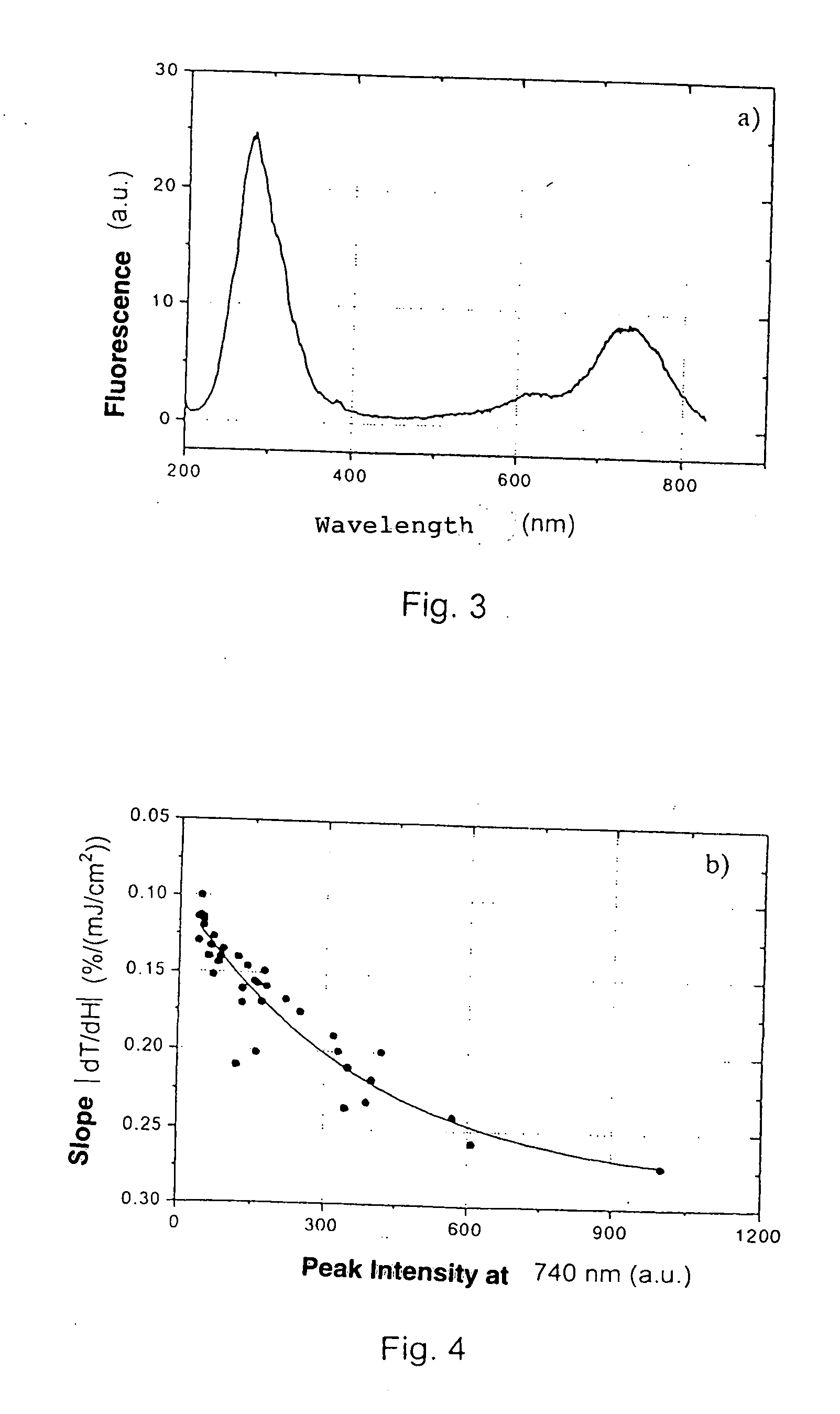Method for quantitative determination of the suitability of crystals for optical components exposed to high energy densities, crystals graded in this way and uses thereof
a technology of crystals and optical components, applied in the direction of photometry, structural/machine measurement, sensing record carriers, etc., can solve the problems of reducing the transmission or permeability of these materials, thus the system, and affecting the quality of optical materials
- Summary
- Abstract
- Description
- Claims
- Application Information
AI Technical Summary
Benefits of technology
Problems solved by technology
Method used
Image
Examples
Embodiment Construction
[0039] As shown in FIG. 1, the so-called rapid damage process exhibits saturation after a short increasing stage, going over into saturation with a few thousand laser pulses according to the fluence. The radiation damage remains stable for a relatively long time and relaxes after a half to one hour or up to several days or even months according to the material. Heating accelerates this relaxation process. An additional relaxation process possibility is shown in FIG. 1. Because of the irradiation the rapid damage process due to the increased fluence H3 by means of several thousand laser pulses the transmission may be returned to its original value for the initial fluence H1 (10 mJ / cm2). Different samples A, B and C, which were of the same material, which in the present case is CaF2, were tested by means of the procedure shown in FIG. 1. The different samples have different slopes (rates of change of transmission with respect to fluence) and thus different measures of their usefulness...
PUM
 Login to View More
Login to View More Abstract
Description
Claims
Application Information
 Login to View More
Login to View More - R&D
- Intellectual Property
- Life Sciences
- Materials
- Tech Scout
- Unparalleled Data Quality
- Higher Quality Content
- 60% Fewer Hallucinations
Browse by: Latest US Patents, China's latest patents, Technical Efficacy Thesaurus, Application Domain, Technology Topic, Popular Technical Reports.
© 2025 PatSnap. All rights reserved.Legal|Privacy policy|Modern Slavery Act Transparency Statement|Sitemap|About US| Contact US: help@patsnap.com



